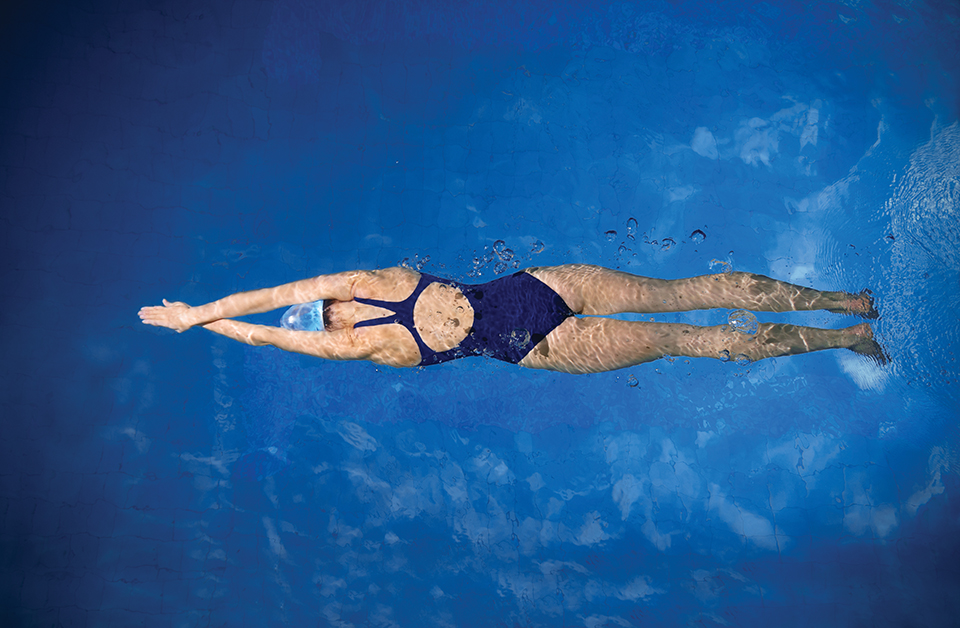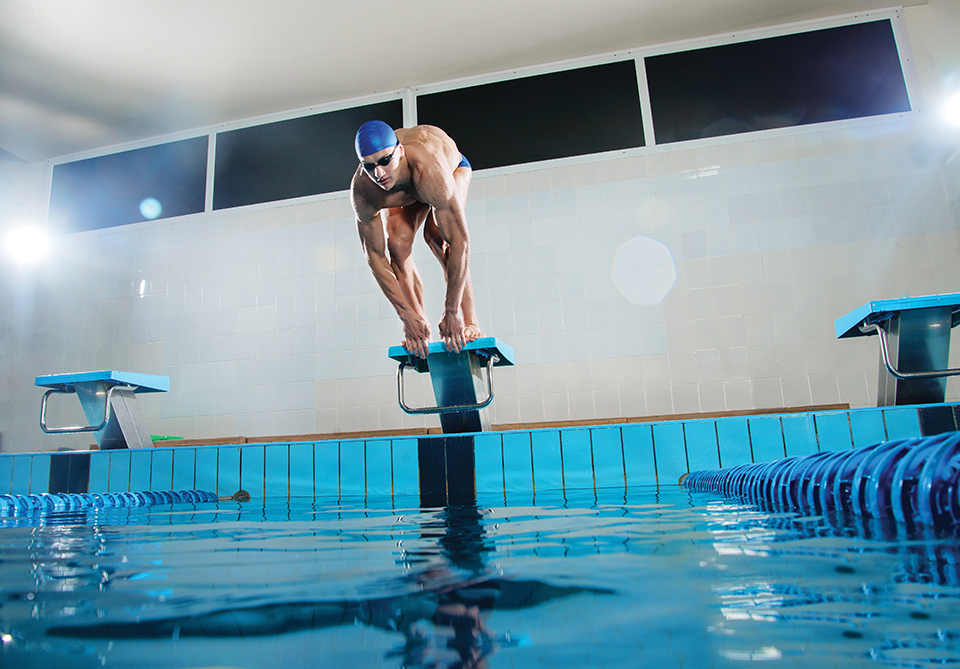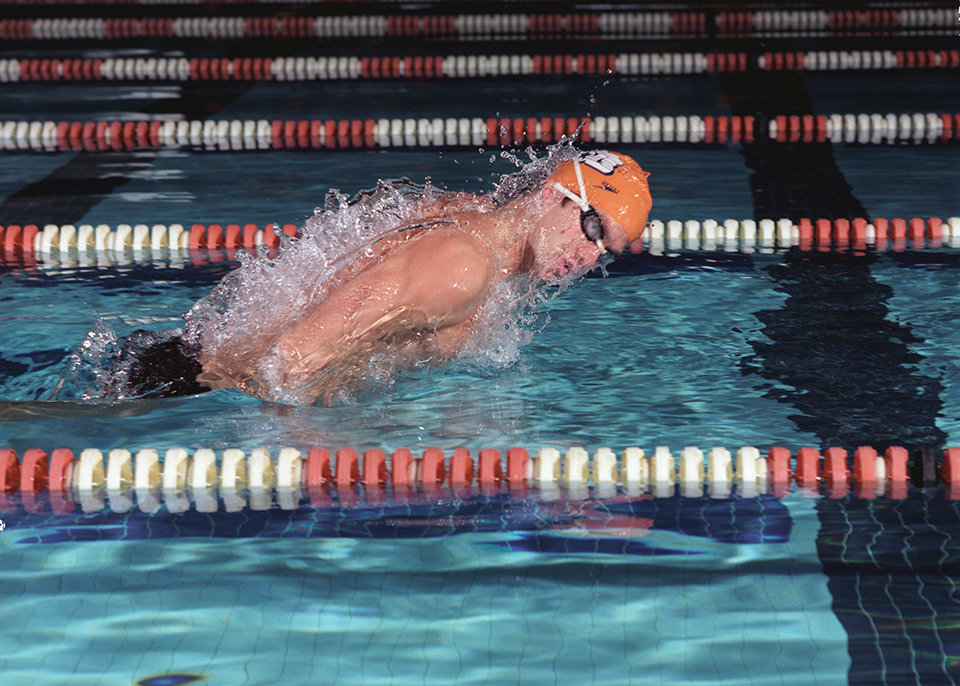From Bulky Wool to Full-Body Suits

At the 2009 World Aquatics Championships, swimmers raced in colorful swimsuits which covered their chest and legs, part of a full-body suit movement that shattered swimming records.
“These suits were bullets,” says Mel Stewart, a former Olympic swimmer and co-founder of the news organization, SwimSwam. “Every time someone fell in the water and raced at World Championships in 2009, it was a new world record.”
But before competitive swimwear technology reached its peak, there was a time when athletes weren’t even offered a form-fitting suit.
Early 20th century swimsuits were much bulkier, made out of wool and covered a swimmer’s trunk, chest and shoulders. When Alexander MacRae introduced the “Racerback” suit — which exposed the swimmer’s shoulders and back to allow for better movement — in 1928, it made a big splash in the conservative swimwear world.

His suit’s silk material — which was much lighter in water than wool — and its figure-hugging shape allowed for faster swimming. By 1929, MacRae had started to produce these suits under his swimwear brand, Speedo.
New swimwear materials such as nylon, used in the 1950s, and Lycra in the 1980s further advanced the options available to swimmers. Women generally wore one-pieces, and men wore briefs.
By the mid-to-late 80s, a small swim brief called a “paper suit” had debuted and was worn to the Olympics by swimmers like Stewart.
“The paper suit was so tight, it was like the twists on a sausage around your midsection,” Stewart says.
The suits were generally worn a couple sizes smaller than a swimmer’s normal measurements and stretched out to where a swimmer had to wear a new suit each time.
Stewart won two gold medals and a bronze at the 1992 Summer Olympics. In the late 90s, after Stewart’s Olympic days, came the rise of the jammer — a “bike short” style competitive swimsuit that he says, at the time, “hurt his soul.”
“If you’re not wearing a Speedo, if you’re not wearing something that would embarrass you on the beach, you weren’t a real swimmer,” Stewart says jokingly. “Culturally, from my era, that’s the way people think.”
However, Stewart says when he learned that jammers were increasing registration, as younger boys seemed to feel more comfortable in them compared to Speedo’s, he had a change of heart about the shorts.

In 2000, a new, full-body suit for men and women was released by Speedo. Called the Fastskin, its design was heavily influenced by a shark’s skin.
The full-body suit didn’t draw much attention until 2007, when high-tech versions were worn by more and more record-breaking athletes. In 2008, Speedo released a game-changing version of the suit — the LZR Racer.
Ninety-eight percent of all medals won at the 2008 Olympics in Beijing were won by athletes wearing the LZR Racer. Just 17 months after its introduction, 93 world records had been broken by athletes wearing the suit.
Michael Phelps was one such athlete, wearing the LZR Racer when he won eight gold medals at the Beijing Olympics — still the most golds ever won by an athlete at a single Games.
“2008 and 2009 were just crazy,” says Rick Madge, owner of the blog Coach Rick Swimming. “Basically, every record in the books was rewritten many, many times.”
The suit improved swimming by trapping air for buoyancy, providing body compression and reducing water resistance. More and more companies entered the market, producing their own versions of the faster suit.
“Swimming sort of became like Formula One,” Stewart says. “It wasn’t just the swimmer. It was ‘what kind of suit can you wear?’ Because your suit is basically a race car.”
In response to the huge impact these suits had on a swimmer’s performance, FINA, the international governing body for swimming, established a new set of swimsuit guidelines in 2009, that went into effect in 2010.
The guidelines banned full-body suits from competition, requiring that they did not extend past the shoulders or knees for women, or above the waist and below the knees for men. Swimsuit technology that led to the suits’ flotation and compression was also limited.

KNOXVILLE, TN – Melvin Stewart of the Tennessee Volunteers posed action portrait at the Student Aquatic Center in Knoxville, TN. Photo By Tennessee Athletics
Today, competition swimsuits still abide by those FINA regulations. One significant thing, however, did continue on from the period of the high-tech, full-body suits — the high price tag that generally accompanied them.
Competitive suits now cost hundreds of dollars more than they did before the full-body suit surge, even though they don’t include the same technology they once offered, Madge says.
“Now suits that are really no better than ordinary suits — like $50 suits — they can now charge up to $500 for them,” Madge says.
Grace Ariola, a freshman member of UT Austin’s swim team, says current competition suits can be very expensive and wear out after just a couple meets.
She currently swims the 50 freestyle, 100 freestyle and 100 backstroke, and says the right suit can have a big impact on her performance.
“Winners and losers are separated by like hundredths and thousandths of a second,” Ariola says. “So if a suit isn’t fitting right or it’s not the right size or it’s worn out, it makes a huge difference.”






